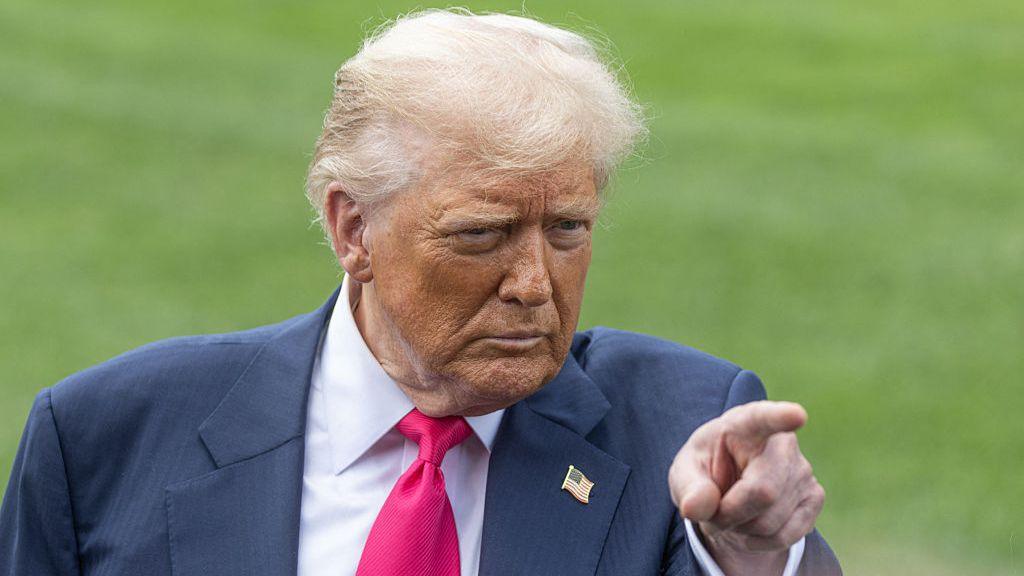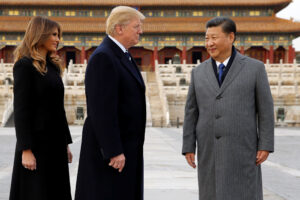Trump’s Ukraine Pivot: A Bold Move or a Chaotic Misstep?
In a whirlwind of policy announcements, former President Donald Trump has once again thrust himself into the center of the Ukraine-Russia conflict, unveiling a $10 billion weapons package for NATO allies supporting Ukraine. The move, announced with characteristic bravado, signals a significant shift in Trump’s approach to the war—a war that has raged for over three years, reshaping geopolitics and testing the resolve of the West. But beneath the headline-grabbing figure lies a tangle of contradictions, half-truths, and head-scratching missteps that leave you wondering whether this is a genuine commitment to Ukraine’s defense or a haphazard attempt to flex diplomatic muscle. Frankly, it feels like a bit of both.
Let’s start with the good. The $10 billion in weapons—ranging from Patriot air defense systems to artillery—represents a massive infusion of American-made firepower to Ukraine’s front lines. This isn’t pocket change; it’s nearly double the $6 billion in military aid President Joe Biden sent in his final months in office. For a country battered by relentless Russian missile strikes, this could be a game-changer. Ukraine’s soldiers, often relying on ingenuity and outdated equipment, might finally get the tools to hold their ground more effectively. You get the sense that this package, funneled through NATO allies who foot the bill, is a pragmatic acknowledgment of America’s unmatched defense production capacity. The U.S. has the world’s largest military stockpiles—why not leverage them to bolster a democratic ally under siege?
But here’s where it gets murky. Trump’s announcement isn’t a direct U.S. aid package; it’s a sale, with European allies picking up the tab. This distinction matters. While it sidesteps the political quagmire of committing new U.S. funds—especially with a Republican base skeptical of foreign entanglements—it raises questions about long-term commitment. Trump still has roughly $3 billion in presidential authority to send weapons directly to Ukraine before October 1, 2025. Will he use it? Or is this a convenient way to look tough while keeping American taxpayers at arm’s length? The silence on new bilateral aid feels like a hedge, a way to keep his options open while placating both hawks and isolationists in his orbit.
Then there’s the confusing. Trump’s claim that 17 Patriot air defense systems could arrive in Ukraine “within days” is, to put it bluntly, nonsense. The Pentagon itself seemed baffled, deferring to the White House for clarification. Germany’s defense minister noted that even one new Patriot system would take months to deliver—if one could even be found. It’s hard not to roll your eyes at this. Did Trump mishear an advisor’s mention of 17 missiles and inflate it into entire systems? Or is this just another case of his penchant for hyperbole? Either way, it undermines the credibility of an otherwise promising announcement. You can’t help but feel a pang of frustration for Ukraine, where every day of delay means more lives lost to Russian airstrikes.
The most troubling part, though, is the downright bizarre. Trump’s ultimatum to Russia—resolve the war in 50 days or face 100% tariffs—feels like a plot twist from a reality TV show, not a coherent foreign policy strategy. Tariffs, as economists tirelessly point out, are a tax on American consumers, not foreign governments. With U.S. imports from Russia totaling a mere $3 billion annually, the impact would be negligible for Moscow but painful for Americans buying Russian goods. Trump’s fixation on tariffs, coupled with vague threats of secondary sanctions on countries buying Russian oil, seems more performative than practical. It’s as if he’s trying to channel his deal-making persona into geopolitics, but the stakes here aren’t a Manhattan real estate deal—they’re the survival of a nation.
What’s more, the 50-day deadline reeks of arbitrariness. Why 50 days? The answer seems to lie in Trump’s obsession with round numbers and deadlines tied to the calendar—September 1, in this case. But the idea that Russia, which has shown no interest in a ceasefire, would suddenly capitulate is laughable. Putin’s forces have barely advanced in six months, and Ukraine’s resilience, bolstered by this new weapons influx, makes a Russian breakthrough even less likely. The notion that Putin requested 60 days to “take all the territory he wants,” as floated in some conspiratorial corners, only adds to the absurdity. Did Trump misunderstand a phone call with Putin? Or is he spinning a narrative to justify his timeline? Either way, it’s a reminder of how Trump’s improvisational style can muddy the waters of diplomacy.
This brings us to the human element, which is impossible to ignore. The transcript mentions Rebecca Marowski, an American combat medic in Ukraine, whose drone unit delivers life-saving supplies to soldiers trapped on the front lines. Her plea for donations—after her team lost equipment and lives to Russian attacks—cuts through the political noise. Imagine being a Ukrainian soldier, wounded and hiding in a basement, waiting for a drone to drop water or medicine that might never come. It’s a stark reminder that while leaders like Trump play chess with tariffs and deadlines, real people are fighting and dying. Marowski’s work, and the countless others like her, underscores the urgency of getting this right.
Historically, Trump’s approach echoes the erratic U.S. foreign policy of the Cold War era, when leaders oscillated between confrontation and détente with the Soviet Union. But unlike those days, today’s conflict is a hot war on Europe’s doorstep, with global ramifications. Trump’s pivot away from his earlier flirtations with appeasing Putin—offering to recognize Crimea as Russian and lift sanctions—suggests he’s feeling the pressure from NATO allies and his own advisors. Figures like JD Vance and Marco Rubio, present at the announcement, likely played a role in nudging him toward a harder line. Even the Kremlin seems rattled, with state TV speculating about Melania Trump’s influence—a bizarre but telling sign of their unease.
Yet, the specter of Trump’s MAGA base looms large. Voices like Marjorie Taylor Greene, who rails against any U.S. involvement in Ukraine, are losing ground but won’t go quietly. The fact that Charlie Kirk, once a vocal critic of Ukraine aid, is now softening his tone shows how Trump’s influence can shift the narrative. But it also highlights the fragility of this moment. If Trump backtracks or loses interest, the momentum could stall, leaving Ukraine in the lurch.
In the end, Trump’s $10 billion weapons package is a lifeline for Ukraine, but it’s wrapped in a package of chaos and contradictions. You get the sense that he’s trying to thread a needle—projecting strength while avoiding the political cost of direct U.S. aid. What’s troubling is the lack of a clear strategy beyond flashy announcements and arbitrary deadlines. Ukraine needs consistency, not showmanship. As the war grinds on, the real test will be whether Trump can sustain this commitment or if he’ll revert to his deal-making instincts, chasing a quick win at Ukraine’s expense. For now, the weapons are a victory, but the path forward feels like a tightrope walk over a geopolitical abyss.



